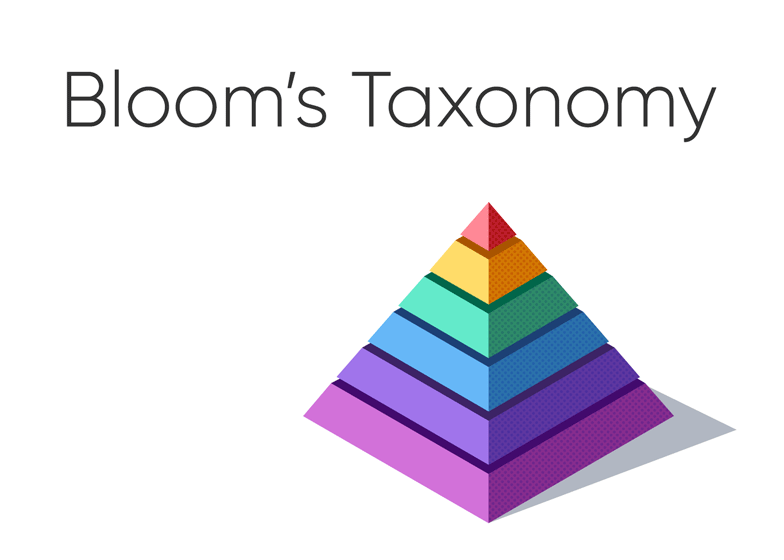
5 min reading time
Applying Cognitive Learning Theory to Your Corporate Learning Strategy
Cognitive Learning Theory explains how we process information when we learn. When we think back to our school days, many of us will remember being taught in this way: a teacher stood at the top of the classroom and lectured us on a subject. Almost every teacher used this method for almost every subject. And in the vast majority of cases, a student’s success was measured by how much they could remember on exam day.
This type of teaching and learning, where the learner is mostly passive, sitting down and listening, while the active participant – the teacher – imparts their knowledge is linked to the Behaviorist Learning Theory. This theory looks at how we, as learners, respond to an external stimulus.
What is Cognitive Learning Theory?
Cognitive Learning Theory, on the other hand, suggests that the learner is an active participant in the process. They come to the table with their own skills, knowledge, memories and relevant information they’ve learned in the past. When learning something new, individuals process and construct their own understanding of a topic based on their past experiences and knowledge.
Cognitive Learning Strategies
To fully understand this theory, let’s look at four psychologists who shaped the concept of cognitive learning. We’re also showing how their theories, or learning strategies, can be implemented in a corporate learning environment.
Learner-centered approach
Learning is cumulative and relative to each individual. When we’re learning, we start with a baseline of knowledge and go from there. Jean Piaget, a Swiss psychologist and pioneer of Cognitive Learning Theory, favored this learner-centered approach to teaching. He suggested that accommodation, assimilation, and equilibration are all crucial to learning:
- Accommodation – how we modify what we already know to take new information into account;
- Assimilation – how the new knowledge is arranged in our heads alongside what we already know;
- Equilibration – the balance between what we already know and what we’re currently mastering.
For Piaget, learning is the process of relating new information to what we already know. To support this, the trainer or facilitator should create a safe environment for learning. A place where learners’ curiosity is nourished, and their insights are welcomed. For Learning and Development Managers, this means how you structure a course or training session is important:
- Each new point that’s introduced should build on the knowledge already acquired
- Learning materials should be divided into appropriate stages and taught in a logical order
- Questions and comments from those in training should be welcomed and encouraged.
Bloom’s taxonomy
Bloom’s taxonomy, named after educational psychologist Benjamin Bloom, describes six different levels of cognitive learning in the form of a hierarchy. At its most basic level, the taxonomy describes the essential abilities needed to recall information that has been taught. While at the highest level it describes a learner’s ability to take what has been taught, analyze it and use it to create and evaluate. 
What are the six levels of Bloom’s taxonomy?
- Remembering: Knowing the facts, being able to recall information, the ability to describe what has been learned
- Understanding: The ability to interpret the information that has been learned in order to present, summarize or paraphrase it
- Applying: Taking what has been learned and using it to solve a related problem or complete a task
- Analyzing: A deeper level of understanding; organizing, comparing, and deconstructing the relationship between different aspects of the material
- Evaluating: The ability to judge the information and critique it so as to choose a specific course of action
- Creating: Generating new ideas or ways of looking at things, inventing, constructing, producing, or designing new things
When training within your organization trainers and Learning and Development Managers should consider the depth of cognitive learning they need to achieve from a given course.
- For example, if you’re training new hires to provide support to customers, it’s likely that remembering, understanding and applying the information provided is sufficient
- If you’re training senior managers and leadership teams who are responsible for making critical business decisions, the level of cognitive learning they need to achieve must be deeper – important financial decisions will require analysis, evaluative and creative skills that come later in the taxonomy.
Learning through discovery
Active learner involvement is a core feature of cognitive learning. Jerome Bruner, a psychologist who studied cognitive learning in children, suggested that instead of simply feeding students information, we should allow them to discover it for themselves.
Bruner built on Piaget’s work. He believed that ensuring learners had a conceptual understanding of the topic was more important than the acquisition of information. Interaction is a core component here. Part of what Bruner called the Spiral Process, previously learned material is reviewed frequently even as new material is being introduced. This ensures that it’s fully understood. In a corporate environment, Bruner’s interpretation of Cognitive Learning Theory can be put in place by:
- Giving your learners opportunities to complete meaningful tasks to solidify learning, for example, role-playing customer service scenarios
- Asking participants to solve real-world challenges your organization faces during training.
Creating meaningful experiences for your learners
David Ausubel, an American psychologist and advocate of cognitive learning, believed that for learning to be effective and permanent, it had to be meaningful. He made a clear distinction between meaningful learning and rote learning, where the material is learned as a series of facts in isolation. Or simply learned off by heart and no deliberate attempt is made to demonstrate its value or relevance to the learner. He believed that relatable material, which fitted in closely with what the learner already knew, was meaningful and therefore effective.
When trainers make a marked effort to show why a lesson is meaningful for the learner, there’s a significantly higher chance of it becoming anchored in the brain alongside what’s already known. Ausubel suggested that advance organizers are an effective way of doing this. This means that before diving into a complex topic, trainers should cover some introductory material or offer some background to the topic. When learners have the relevant background knowledge, it’s easier for them to ‘slot in’ new information. For your organization, this means:
- New information should be sequenced carefully so that this knowledge builds on what your learner already fully understands
- Prefacing new material with introductory or background information is important
- Trainers should emphasize how each element of the session is meaningful to the job or task your learner is being prepared for.
Supporting cognitive learning within your organization
When designing the content for your next training program, bear in mind that individuals relate to materials in different ways. You can give each participant the best shot at success by:
- sequencing your course content carefully
- reviewing material you’ve already covered regularly
- allowing learners the opportunity to play an active part in their own learning
- and emphasizing why the material is meaningful and how it relates back to their success.
There are many corporate learning theories out there to choose from. What are your thoughts on applying Cognitive Learning Theory to your corporate training strategy? Do you use this method of learning in your workplace, or would you like to start? Leave a comment with your thoughts below.



